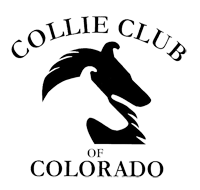Origins
Collies became popular in the 1860’s when Queen Victoria brought several back to Windsor Castle after watching them herd sheep at her estates in Balmoral. The collie had been used as a herding dog in the border counties of northern England and Scotland. Its earliest ancestors may have been the herding dogs that accompanied the early Romans across what is now Britain. The Collie first came to the United States at the turn of the 20th century. They quickly became popular in the dog show world and as a family pet. You can catch an enchanting glimpse of past collies in this video “The Collie 1937”.
Overview
The collie’s temperament makes it a fine family dog. Collies are affectionate with children, family members, and other familiar adults, and are generally friendly with other animals. These are highly responsive dogs that want to please their owners. Collies excel in obedience training, as long as the sessions are varied (repetitive activities bore these intelligent dogs) and interspersed with retrieving and jumping. Collies can be reserved with strangers without behaving aggressively, although they may bark when they feel they are needed as watchdogs or when they want attention.
Appearance
The Collie’s coat comes in two varieties. The coat of the rough variety is abundant except on the head and legs. The outercoat is long, straight and harsh to the touch; the undercoat is soft, furry, and so dense that it is difficult to see the skin. The smooth variety has a dense short coat. The Collie is bred in four colors: sable and white, tricolor, blue merle, and white. The head shape is a lean, blunt wedge.
Breed Group: Herding
Height: 22-24 inches for female and 24-26 inches for males
Weight: 50-65 lbs for females and 60 to75 lbs for males
Life Span: 10-14 yrs
Attention
Collies require daily attention and time in the house with their people. Dogs who do not get enough attention often become vigorous barkers. These dogs have also been known to chew and become diggers. Collies who receive a daily dose of love and attention are wonderful house companions.
Grooming
The amount of grooming required depends on the amount of coat and time of year. The rough’s coat requires weekly brushing when in full winter coat, and daily brushing when the coat is being shed. The Collie typically sheds once a year in the spring, when a shedding rake is needed to remove the dense undercoat. The smooth Collie requires only an occasional brushing when not shedding, but daily brushing while the coat is falling out. Bathing is generally recommended at the time the coat begins to fall out for the summer, with occasional baths throughout the year. It is also important to trim your Collie’s toe nails. Trimming every other week helps the dog maintain proper balance and prevents early onset arthritis.
Exercise
Collies do not need vigorous exercise, even though they are a herding breed. A daily brisk walk around the block and ten to fifteen minutes of play are sufficient.
Health
The two most health issues are Collie Eye Anomaly and Drug Sensitivity. The Collie Club of Colorado highly recommends Collie owners familiarize themselves and their vet with the list of Problem Drugs in order to avoid unnecessary health issues. For additional information, visit the Collie Health Foundation web site—the most comprehensive source on Collie health issues.
Recommended Reading Materials
Collie Concept by Mrs. George H. (Bobbee) Roos
How to Raise a Puppy You Can Live With by David H. Neil and Clarice Rutherford
Tricks of the Trade: From Best Intentions to Best in Show by Pat Hastings with Erin Ann Rouse
A Celebration of the Working Collie by Cindy M. Dorsten
The Complete Collie by The Collie Club of America
On Talking Terms with Dogs: Calming Signals by Turid Rugaas
